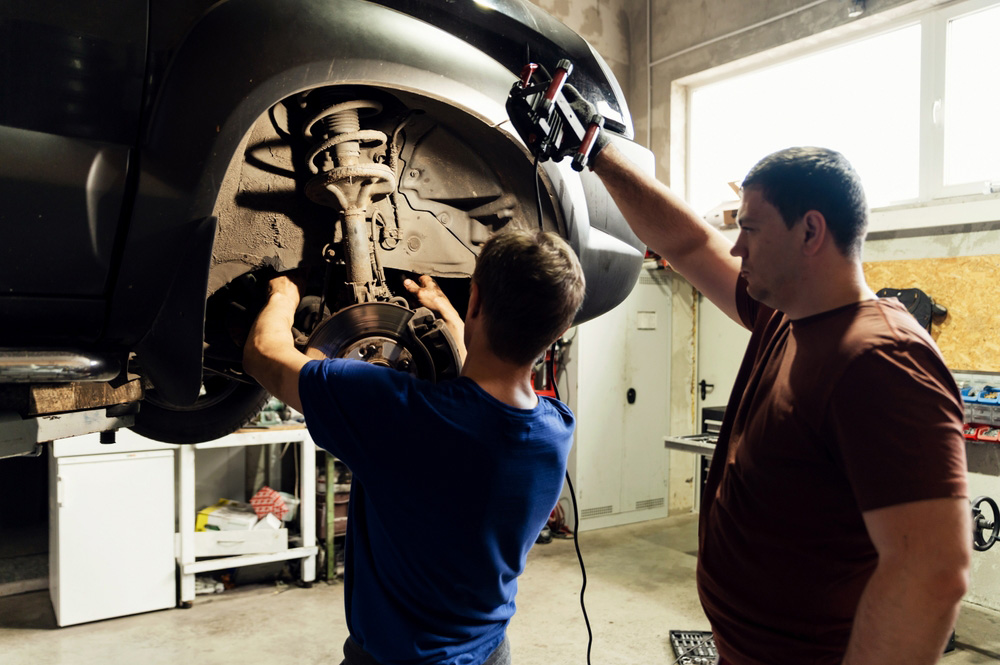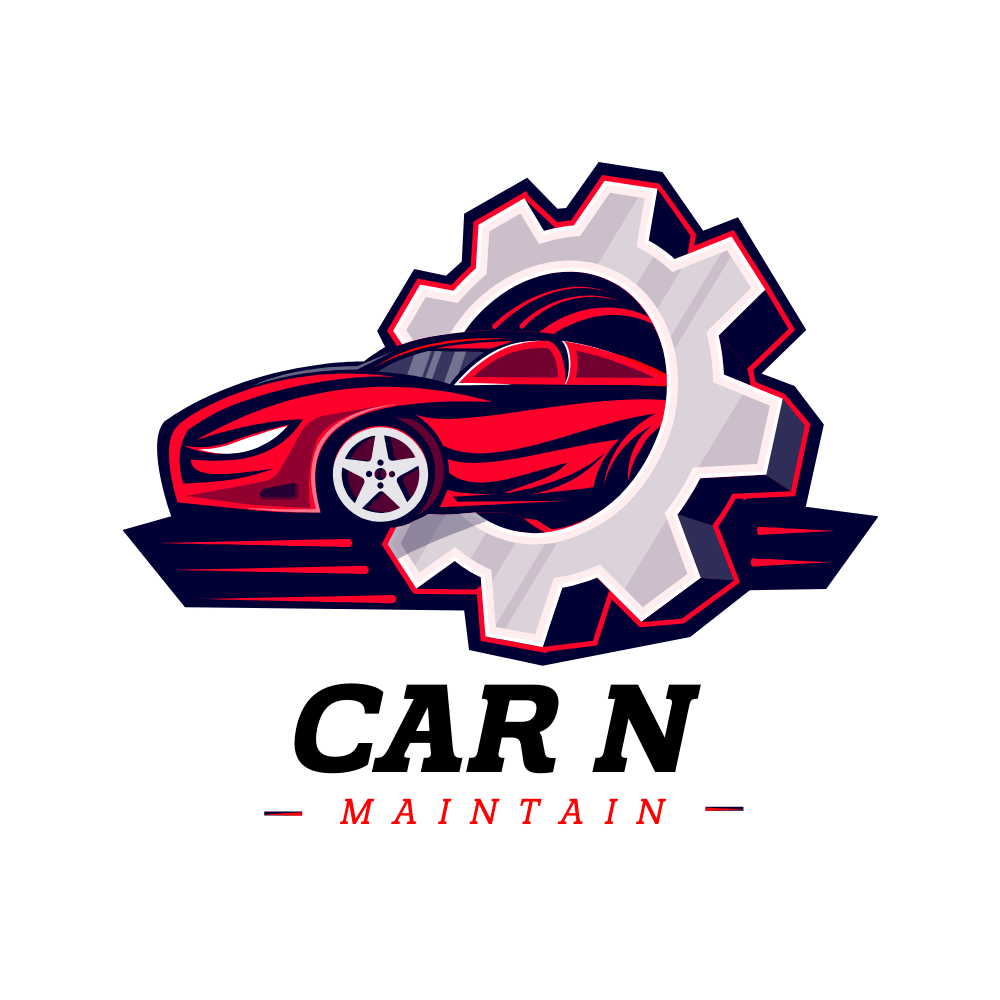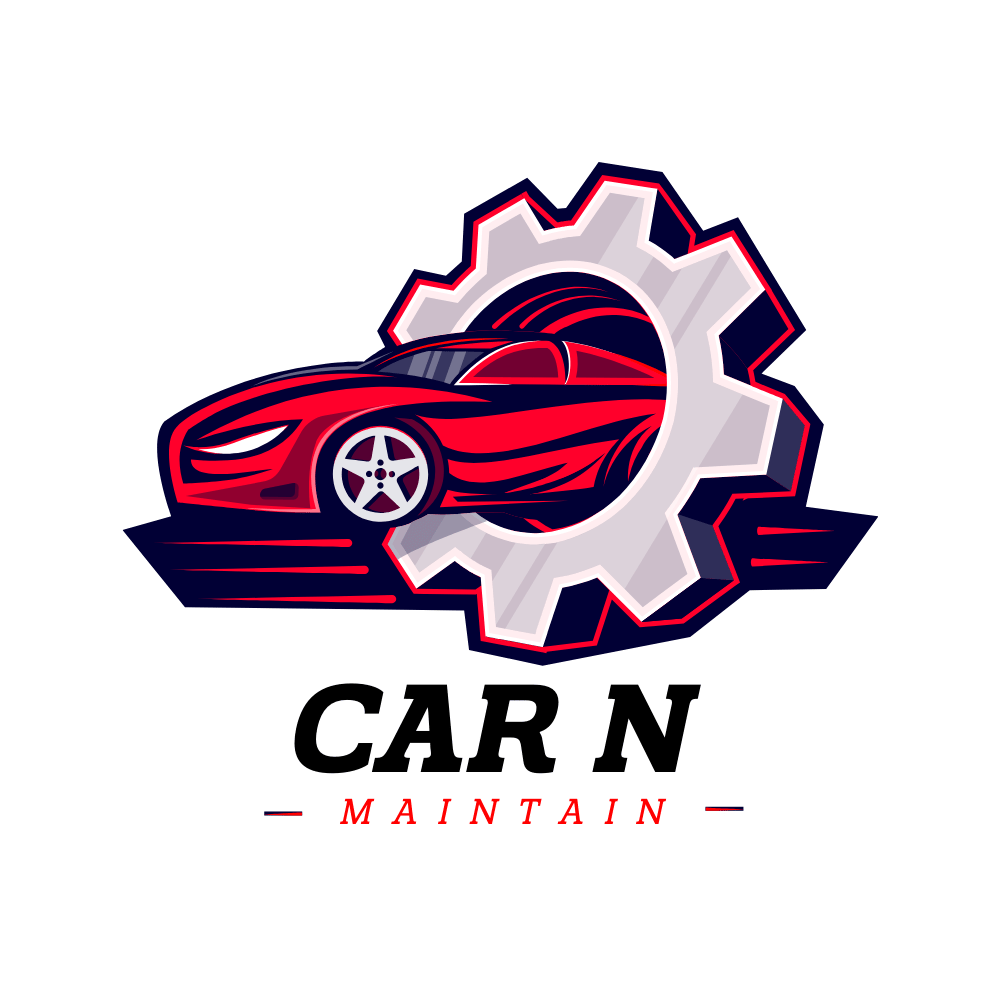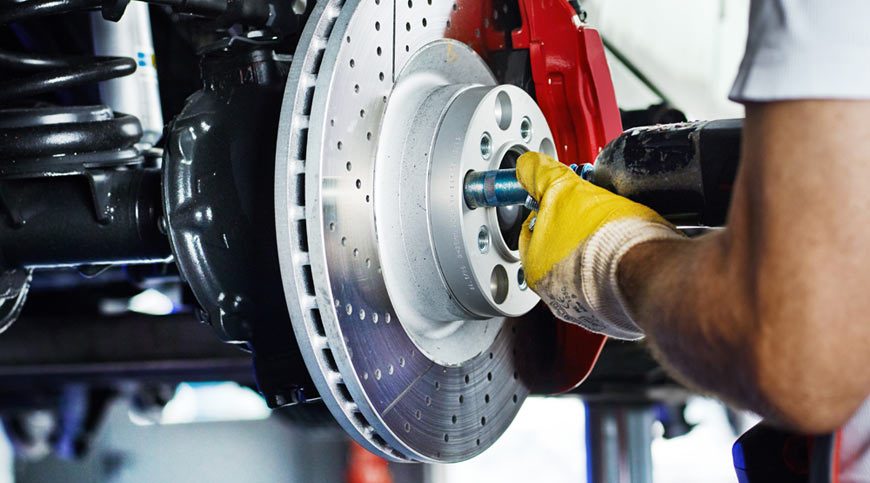You should get a brake system inspection every 12,000 miles or once a year, whichever comes first. Regular checks ensure safety and vehicle longevity.
Maintaining your vehicle’s brake system is crucial for safety. Neglecting brake inspections can lead to severe consequences, including brake failure. Regular inspections help identify wear and tear early, preventing costly repairs. They also ensure optimal braking performance, giving you peace of mind on the road.
Mechanics can check brake pads, rotors, and fluid levels during an inspection. These components are vital for effective braking. Timely inspections can extend the life of your brake system. Don’t wait for warning signs to appear. Make brake inspections a part of your routine vehicle maintenance. Your safety depends on it.

Credit: daveandraysauto.com
Importance Of Brake Inspections
Brake inspections are crucial for your car’s safety. They ensure that your vehicle stops effectively. Regular checks can save lives and money.
Safety First
Your brakes are the most important safety feature. They help you avoid accidents. Regular brake inspections ensure that your brakes work well.
Faulty brakes can cause serious accidents. Inspect them to keep your family safe. A well-maintained brake system gives peace of mind.
Preventing Costly Repairs
Regular brake inspections can save you money. They help identify issues early. Fixing small problems prevents costly repairs later.
A brake system inspection can find worn-out parts. Replacing these parts early is cheaper. This avoids expensive repairs in the future.
Consider these common brake issues and their costs:
| Brake Issue | Average Repair Cost |
|---|---|
| Worn Brake Pads | $100 – $300 |
| Warped Rotors | $200 – $400 |
| Brake Fluid Leak | $100 – $150 |
Signs You Need A Brake Inspection
Your car’s brake system is crucial for safety. Regular inspections ensure everything works well. But how do you know when to check your brakes? Here are some signs that you need a brake inspection.
unusual Noises
Do you hear strange sounds while braking? Squeaking or grinding noises signal brake issues. These sounds mean your brake pads might be worn out. Don’t ignore these noises. They can lead to serious problems.
vibrations While Braking
Feel vibrations when you press the brake pedal? Your brake rotors might be warped. This can make your car unsafe. Vibrations mean you need a brake inspection right away.
Recommended Inspection Frequency
Maintaining your brake system is crucial for safety. Regular inspections ensure everything works well. But how often should you get your brakes checked? Let’s dive into the recommended inspection frequency.
Manufacturer Guidelines
Each car manufacturer has specific recommendations for brake inspections. Consult your vehicle’s manual for details. Many suggest inspections every 12,000 miles or once a year. Following these guidelines keeps your brake system in top shape.
General Recommendations
Besides manufacturer guidelines, general recommendations can guide you. Many experts advise brake system checks every 6 months. Regular checks can catch issues early.
- Check brakes every 6 months or 6,000 miles.
- Listen for unusual noises during braking.
- Watch for any changes in braking performance.
For high-mileage drivers, more frequent inspections may be necessary. Driving conditions also affect inspection frequency. For example, city driving with frequent stops wears brakes faster.
Overall, sticking to a regular inspection schedule ensures your safety and extends your brake system’s life.

Credit: www.procheckautomotive.com.au
Factors Affecting Inspection Frequency
Knowing how often to get a brake system inspection can be tough. Several factors influence the needed frequency. This section covers two main factors: Driving Habits and Environmental Conditions.
Driving Habits
Your driving habits significantly affect brake inspection frequency. Aggressive driving, like frequent hard braking, wears out brakes faster. If you drive this way, get inspections more often.
Driving in heavy traffic also impacts your brakes. Stop-and-go traffic increases brake usage, requiring more frequent checks. Long-distance highway driving is gentler on brakes.
If you mostly drive on highways, inspections can be less frequent. Check your brakes if you notice squeaking or poor response.
Environmental Conditions
The environment you drive in affects your brakes too. Wet and snowy conditions can wear down brakes quickly. Salt on roads during winter causes rust, damaging brake components.
Living in hilly areas also impacts brakes. Frequent downhill driving uses brakes more, requiring regular inspections. Dusty environments can clog brake parts, making frequent checks necessary.
Consider climate and terrain when planning brake inspections. Regular checks ensure safety and prolong brake life.
Types Of Brake Inspections
Understanding the types of brake inspections helps maintain your car’s safety. There are two main types: visual inspections and comprehensive inspections. Each type has its purpose and method. Knowing both can help you decide which one you need.
Visual Inspections
A visual inspection is a quick check of your brake system. A mechanic looks at brake pads, rotors, and brake fluid levels. They check for wear and tear. You can visually inspect yourself if you know what to look for.
- Check brake pads for thickness.
- Look at the rotors for grooves or damage.
- Ensure brake fluid levels are adequate.
- Inspect brake lines for leaks.
Visual inspections are less detailed. They are useful for spotting obvious problems. They can be done every few months or before a long trip.
Comprehensive Inspections
A comprehensive inspection is more detailed. A mechanic takes apart parts of the brake system. They check each component carefully. This type of inspection includes:
- Measuring brake pad thickness accurately.
- Checking rotor condition and thickness.
- Testing brake fluid for contamination.
- Inspecting brake lines and hoses thoroughly.
- Evaluating the brake calipers and wheel cylinders.
Comprehensive inspections are often done during routine maintenance. They should be scheduled at least once a year. They help find hidden issues that a visual inspection might miss.
| Inspection Type | Frequency | Scope |
|---|---|---|
| Visual Inspection | Every few months | Basic check of visible components |
| Comprehensive Inspection | Once a year | Detailed check of all brake components |
Both inspection types are important for brake system health. Regular checks ensure your brakes work well. This keeps you and your passengers safe on the road.
Diy Vs. Professional Inspections
Deciding between a DIY brake system inspection and a professional service can be tough. Each option has its benefits and drawbacks. Let’s explore these in detail.
Pros And Cons Of Diy
| Pros | Cons |
|---|---|
|
|
Benefits Of Professional Service
Professional brake inspections offer several important benefits:
- Expertise: Technicians have specialized knowledge.
- Time-efficient: Inspections are quicker.
- Comprehensive check: Identifies all potential issues.
- Safety assurance: Ensures your car is safe to drive.
- Advanced tools: Professionals use high-quality tools.
Weighing the pros and cons of each option can help you make an informed choice. Whether you opt for DIY or a professional service, regular brake inspections are crucial for your safety.
What To Expect During An Inspection
Understanding what happens during a brake system inspection can help ease any worries. This knowledge can also help you maintain your car better. A brake system inspection checks every part of the braking system. This ensures your safety on the road.
Inspection Checklist
During the brake system inspection, the mechanic follows a detailed checklist. Here are the key points they cover:
- Brake Pads: Check for thickness and wear.
- Brake Rotors: Inspect for cracks and uneven surfaces.
- Brake Fluid: Measure the level and check for leaks.
- Brake Lines: Look for any signs of damage or wear.
- Brake Calipers: Ensure they are functioning correctly.
- Emergency Brake: Test for proper operation.
Common Findings
During a brake system inspection, mechanics often find a few common issues:
- Worn Brake Pads: Thin pads can reduce stopping power.
- Warped Rotors: This can cause vibrations when braking.
- Low Brake Fluid: A sign of potential leaks or other issues.
- Damaged Brake Lines: These can lead to brake failure.
- Sticking Calipers: This can cause uneven brake wear.
Regular inspections can catch these issues early. This helps to keep you safe and avoid costly repairs.
Maintaining Your Brake System
Keeping your brake system in top shape is essential for safety, and regular inspections help identify issues early. Proper maintenance ensures your brakes work efficiently. Below are some tips and guidelines for maintaining your brake system.
Regular Maintenance Tips
- Check brake fluid levels every month. Low fluid can cause poor braking.
- Inspect brake pads every six months. Worn pads can damage rotors.
- Listen for unusual sounds. Squeaking or grinding indicates worn components.
- Test brake response regularly. Soft or spongy pedals suggest air in the system.
When To Replace Brake Components
| Component | Replacement Interval | Signs of Wear |
|---|---|---|
| Brake Pads | Every 30,000-70,000 miles | Thinning, squeaking, or grinding noise |
| Brake Rotors | Every 50,000-70,000 miles | Vibrations, grooves, or scoring on rotors |
| Brake Fluid | Every 2 years | Dark or dirty fluid |

Credit: www.oxmoortoyota.com
Frequently Asked Questions
How Often Should Brakes Be Inspected?
Brake inspections should be done every 12,000 miles or annually.
What Are Signs Of Brake Problems?
Unusual noises, vibrations, or longer stopping distances indicate brake issues.
Can I Inspect the Brakes Myself?
Professional inspections are recommended for safety and accuracy.
Do New Brakes Need Inspection Soon?
New brakes should be inspected after the first 12,000 miles.
What Affects Brake Inspection Frequency?
Driving habits and conditions can affect how often you need brake inspections.
How Long Does A Brake Inspection Take?
A thorough brake inspection typically takes about 30 minutes.
Conclusion
Regular brake system inspections are essential for safety. Aim for checks every six months or 6,000 miles. Timely inspections prevent costly repairs and ensure optimal performance. Stay proactive with maintenance to avoid unexpected issues. Keep your vehicle safe and reliable by prioritizing regular brake system inspections.











1 Comment